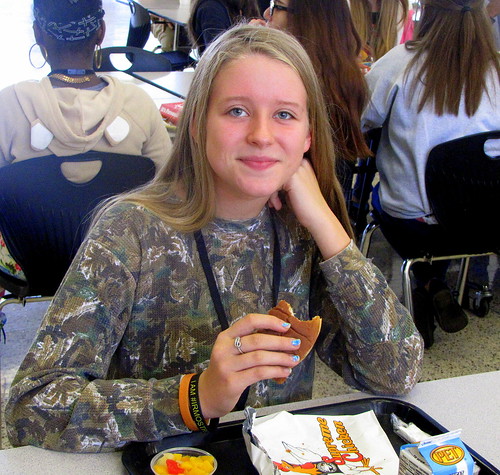
It’s not surprising that chicken, the most popular meat for kids, is being served in school cafeterias across the nation. However, in Columbia, S.C., locally sourced chicken has taken center stage on school meal trays in an effort to increase the state’s Farm to School programming.
South Carolina’s District Five of Lexington and Richland Counties Schools are piloting a poultry project to expand local products offered to students. In partnership with Pilgrim's Pride Corporation, the school district is offering a variety of locally produced products to their students.
This particular Farm to School Program is made possible through the collaboration of the South Carolina Department of Health and Environmental Control, South Carolina Department of Agriculture, South Carolina Department of Education, and Clemson University’s Youth Learning Institute.
By Holly Godwin, South Carolina Farm to Institution Program Director
During the 2013-2014 academic school year, 20 District Five schools of Lexington and Richland Counties (South Carolina) participated in the Supreme Chicken project. This included all 12 elementary schools, four middle schools, and four high schools.
In compliance with USDA’s National School Lunch Program nutritional sodium and grain standards, the Supreme Chicken Pilot Program features three different locally sourced chicken sandwiches (grilled, spicy grilled, and whole wheat breaded) and chicken nuggets to students as a meal option. These menu items were vetted by students and are offered daily in the districts’ high schools and middle schools and monthly in the elementary schools.
A Supreme Chicken logo has been created and the sandwiches and nuggets are packaged in bags and boxes displaying the logo and advertising the options as local. The school cafeterias promote the chicken options with Supreme Chicken signage developed by the South Carolina Farm to School Program.
In total, 112,800 South Carolina produced chicken products were purchased through this pilot project. Of these, 18,720 were chicken nugget products and all others were chicken sandwiches. Numbers of products purchased by school varied greatly from a total of 360 products at one small elementary school to 36,200 from a larger high school within the district. This was expected, given the differences in student population numbers.
Students provided feedback on the Supreme Chicken Pilot Project through a short survey. Most of the students surveyed (81 percent) had tried the Supreme Chicken and just over half of them purchased it at least once each week. Additionally, 76 percent of students surveyed reported that they would be able to recognize the Supreme Chicken logo. The success of this pilot project has sparked the attention of other school districts in South Carolina. The South Carolina Farm to School program is looking forward to expanding to additional school districts this coming year.
